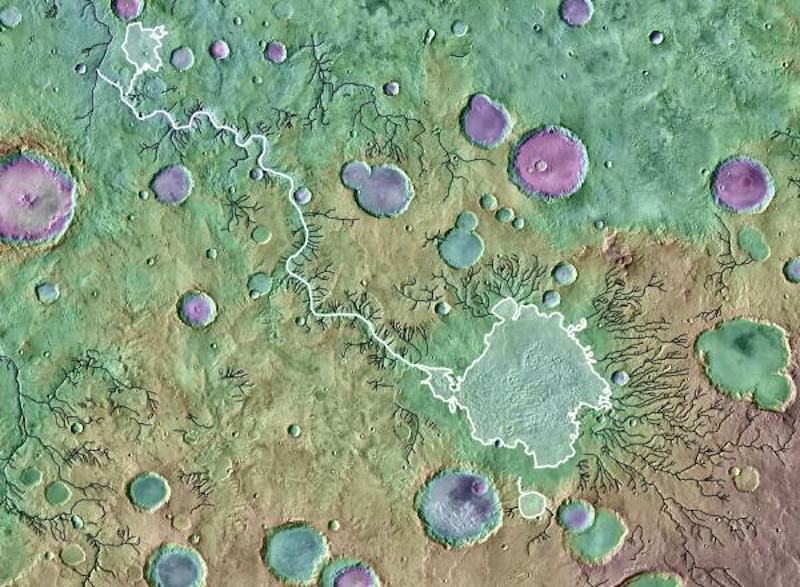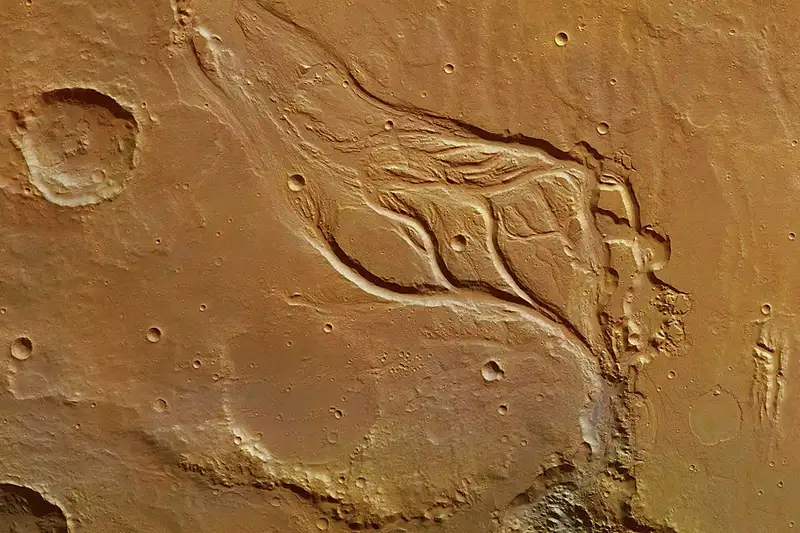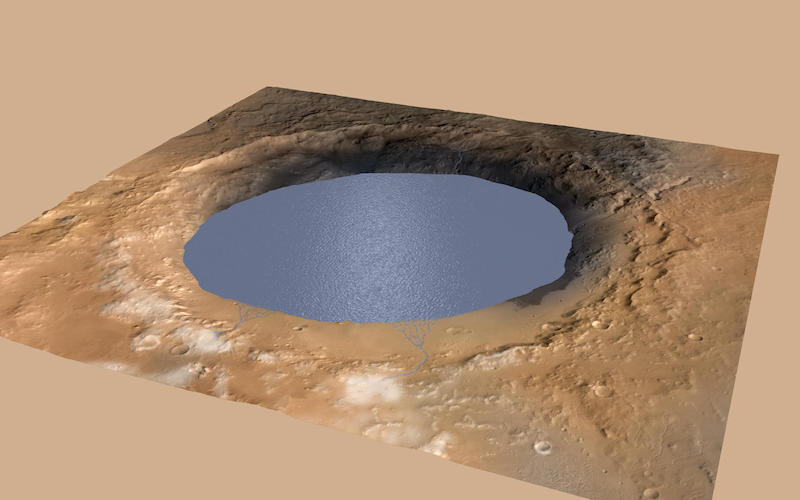
Billions of years ago, Mars was a land of lakes and rivers. Many old river valleys can still be seen today, a record of when Mars was a significantly wetter world. Now, scientists have found new clues as to just how some of those valleys formed: overflowing lakes.
According to a new study led by Timothy A. Goudge at the University of Texas, at least 25 percent of the valleys were created by lake breach flooding, where the water in the lakes overtopped their rims. This is similar to flood waters breaching and overtopping levees.
As a result, huge floods occurred, which carved out the valleys in the surrounding landscape.
The researchers published their peer-reviewed findings in Nature on September 29, 2021.
Land o’ Lakes
Lakes and rivers were abundant on early Mars, before the planet lost most of its atmosphere and warmth and became the cold, dry world we see today. This has been confirmed by multiple orbiters, landers and rovers. Where most of the water went is still debated, although one recent study suggests most of it is locked up in minerals in the planet’s crust.
The new findings, however, show that Mars was once so wet on the surface that the lakes would often overflow. What a difference a few billion years can make!
Alexander Morgan at the Planetary Science Institute (PSI) explained:
We found that at least a quarter of the total eroded volume of Martian valley networks were carved by lake breach floods. This high number is particularly striking considering that valleys formed by lake breach floods make up just 3% of Mars’ total valley length. This discrepancy is accounted for by the fact that outlet canyons are significantly deeper than other valleys. These floods would have shaped the overall Martian topography, affecting the flow paths of other valleys. Our results don’t negate the importance of precipitation-fed runoff on early Mars. On the contrary, liquid water had to be stable for long enough for lakes to fill from inlet rivers.
Overflowing lakes on a wet early Mars
Lake breach flooding was seemingly common during Mars’ wet period, as outlined in the paper:
The surface environment of early Mars had an active hydrologic cycle, including flowing liquid water that carved river valleys and filled lake basins. Over 200 of these lake basins filled with sufficient water to breach the confining topography, causing catastrophic flooding and incision of outlet canyons.

It must have been quite a sight to see so much water washing down out of the lakes and carving out vast valleys. Now, those valleys and canyons are bone-dry, even drier than deserts on Earth.
Mapping lakes and valleys
So, how did the researchers determine that so much flooding occurred? They used global maps of Mars to figure out which valleys had been created by the overflowing lakes. Then they let an algorithm calculate the eroded volume of the valleys. This was then compared to the volume of lake overflow canyons with other valley networks. As Morgan elaborated:
It’s been known for a while that a few select Martian valleys were formed from lake overflow flooding, but our study is the first global analysis. Previous work has argued that differences between valley networks on Mars and river valleys on Earth are evidence that Martian features formed by processes other than surface water, such as groundwater or glacial erosion. Our results show that many Martian valleys are in fact more analogous to catastrophic floods on Earth, such as those that shaped the northwest United States at the end of the last glacial period.

Goudge added:
If we think about how sediment was being moved across the landscape on Mars, lake breach floods were a really important process globally. And this is a bit of a surprising result because they’ve been thought of as one-off anomalies for so long.
Climate change on Mars
The results not only provide scientists with clues about water itself on Mars, but moreover, how the climate changed from a warmer wet one to a cold dry one. How did the planet become so uninhabitable when it was once flowing, literally, with nature’s nectar? Nobody disputes that Mars used to have a lot of water; the question is not so much if the planet changed, but how. Morgan said:
Almost everyone agrees, however, that the early Martian environment underwent big climatic changes. During dry eras, impact cratering and volcanism would disrupt previously developed rivers, essentially creating dams. When the climate warmed to a point where liquid water was stable on the surface, there would have been numerous floods as new flow paths had to be created across the cratered landscape. It would actually have been a surprising finding if lake breach floods were not a significant driver of erosion on early Mars.

An icy world
The floods may be long gone, but Mars still has plenty of water in the form of ice. Not only at the poles, along with carbon dioxide ice (dry ice), but underground as well. Another recent study suggests that dust could help some of that ice melt below the surface, producing relatively small amounts of liquid water. There may also be salty brines in places. In 2018 and 2020, scientists reported the discovery of lakes beneath the south polar ice cap. A more recent study, however, suggests the lakes are actually composed of other materials, such as saline ice (ice melted by salts) or clays.
The formerly dripping wet world is now a cold, frozen and dry one.
Bottom line: A new study of ancient Martian valleys shows that at least a quarter of them were created by massive floods from overflowing lakes billions of years ago.
Source: The importance of lake breach floods for valley incision on early Mars
Via Planetary Science Institute
The post How overflowing lakes created valleys on Mars first appeared on EarthSky.
0 Commentaires